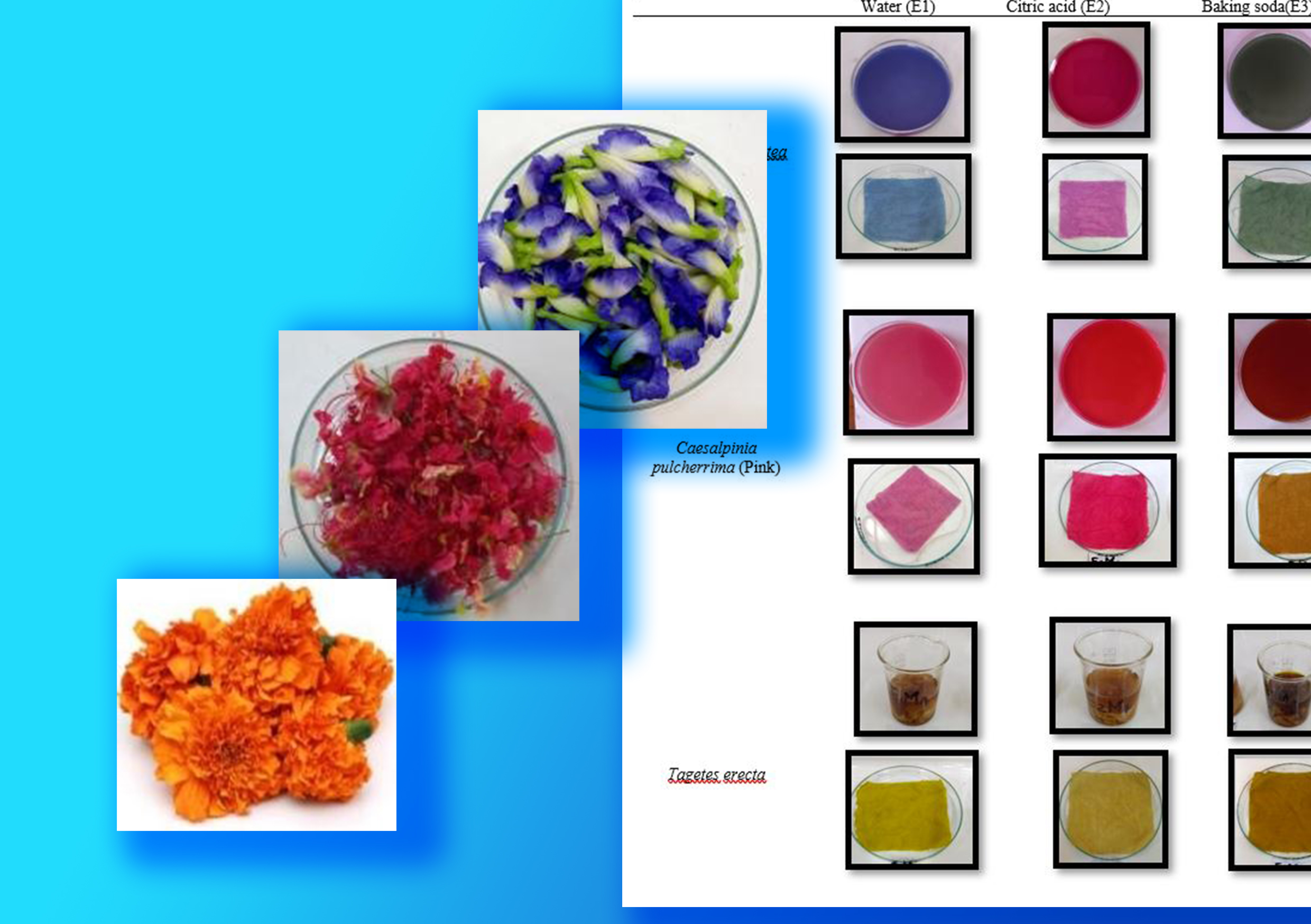Extraction of Natural Dye from Flowers and Dyeing Cotton
##plugins.themes.academic_pro.article.main##
Abstract
Flowers produce bright shade dyes due the presence of pigments such as anthocyanins, carotenoids and flavonoids. These pigments can be extracted in acidic, alkaline and neutral medium. Flowers such as Clitoria ternatea, Caesalpinia pulcherrima (Pink) and Tagetes erecta were selected for this study of dye extraction. The experiment was conducted in two factor factorial, complete randomized design (CRD) with three replicates. Microwave dried and crushed flowers were extracted in citric acid solution 5% (w/v), baking soda solution 5% (w/v) and water. Mordants such as, vinegar (20% v/v), baking soda 4% (w/v), salt 4% (w/v), cream of tartar 4% (w/v) and water were used to fix the extracted dye in the cotton fabric. Colour intensity of the dyed cloths was estimated from the lightness values obtained by colorimeter. The data were subjected to analysis of variance using SAS (9.1) software and the means were separated using Duncan’s multiple range test. Blue colour Clitoria ternatea flower gave blue, pink and dark green colour shades for aqueous, acidic and alkaline extracts, respectively. Caesalpinia pulcherrima produced purple, dark pink and brown shade colours for aqueous, citric acid and baking soda extracts, respectively. Tagetes erecta produced different shades of yellow colour for all the extracts. The results indicated that, pH influences in colour of the dyes extracted from flowers and the colour intensity of the dyed cloths vary according to both the extractants and the mordants used. The present study clearly revealed the potentialities of natural dye extraction and dyeing of fabrics using natural flowers.
Key words: Cotton, extractants, mordants, Flowers, natural dye.

